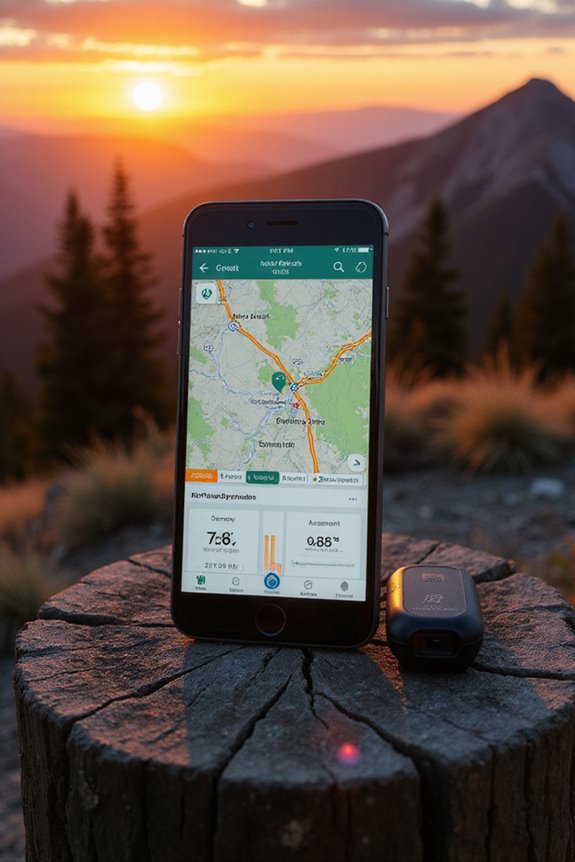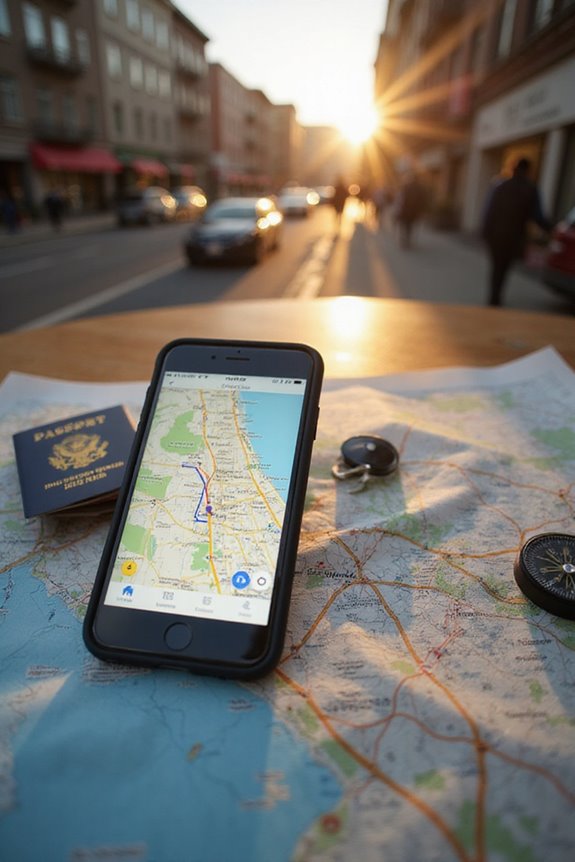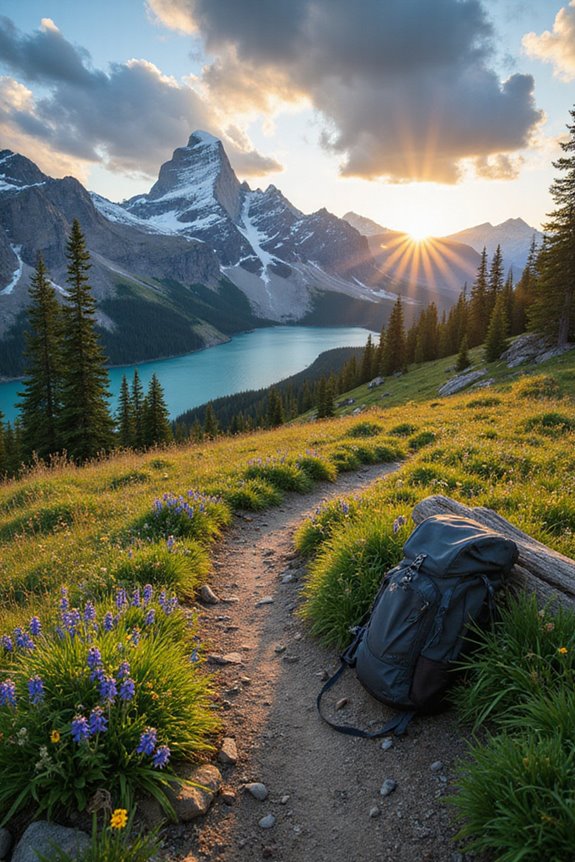When I’m traveling solo, I always make sure to have a few safety apps on hand. For real-time location sharing, I love using Google Maps and Glympse, so my friends know where I am. If I’m in a pinch, TripWhistle connects me directly to emergency services, which is a lifesaver. I also check out GeoSure for safety scores and CrimeReports to avoid sketchy areas. With all these tools, I feel way more secure, and there’s so much more to explore!
Key Takeaways
- UrSafe and TripWhistle Global SOS provide emergency service connections in over 200 countries, ensuring help is readily available for solo travelers.
- bSafe includes a “fake phone call” feature, offering a discreet way to exit uncomfortable situations while traveling alone.
- GeoSure delivers real-time safety scores based on crime and health risks, helping travelers assess local safety before venturing out.
- Glympse allows for quick location sharing with trusted friends and family, enhancing safety through real-time tracking without the need for an account.
- Find My Friends facilitates location sharing with selected contacts, providing peace of mind for solo adventurers exploring unfamiliar areas.
Real-Time Location Sharing Apps
When I first started solo traveling, I felt a mix of excitement and a bit of anxiety, especially about safety. That’s when I discovered real-time location sharing apps, which became my trusty sidekicks. Google Maps lets me share my location with specific friends for chosen durations, and I love how Glympse doesn’t even require an account—just quick and easy sharing! The privacy settings are a lifesaver too; I can control who sees my whereabouts and when. Life360 creates a little safety circle with my loved ones, while Device Tracker Plus keeps my phone in check. With real-time notifications, I’m able to stay connected and feel secure. Honestly, these apps turned my solo adventures from nerve-wracking to totally liberating!
Emergency Alert and SOS Features

While exploring new places alone can be thrilling, it’s essential to have a solid plan for emergencies—especially when you’re far from home. That’s where emergency alert and SOS features come in handy. I love using apps that let me connect directly to local emergency services—no need to memorize different numbers! For instance, TripWhistle covers 196 countries, making it super convenient. Plus, some apps offer voice-activated SOS features, so I can signal for help hands-free when I can’t reach my phone. They even send my location and personal info to responders automatically, which can be a game-changer. With safety check-ins and emergency notifications, I feel a lot more secure venturing into the unknown. After all, better safe than sorry!
Safety Data and Risk Assessment Tools

Finding your way in a new city can be exhilarating, but it can also feel a bit like jumping into the deep end without a life jacket. That’s where safety data and risk assessment tools come in. Apps like GeoSure give real-time safety scores based on crime monitoring, health risks, and more, so you can make informed decisions. It’s like having a local friend who knows all the safe spots! Plus, tools like CrimeReports help you dodge high-crime areas by mapping out recent incidents. By evaluating risks before stepping out, I’ve felt a lot bolder exploring new neighborhoods. Trust me, knowing your surroundings can turn a scary adventure into an exciting one!
Navigation and Route Planning Apps

Finding your way through a new city can feel like trying to solve a puzzle with missing pieces, but that’s where navigation and route planning apps come to the rescue! I love using Wanderlog for detailed itineraries that help me track my budget while planning multi-stop adventures. For road trips, Roadtrippers is fantastic—it shows popular destinations and helps with route optimization. If I’m hiking, Gaia GPS offers offline maps, which are lifesavers in remote areas. And let’s not forget about City Mapper, which provides real-time transit updates, so I’m never stuck waiting for a bus. These apps not only guarantee map accessibility but also make exploring new places a whole lot easier and safer!
Dedicated Traveler Safety Apps

When it comes to solo travel, having the right safety apps is like having a trusty sidekick by your side—one that’s always ready to help you navigate tricky situations. Dedicated safety apps like UrSafe or TripWhistle Global SOS are lifesavers, letting you connect with emergency services in over 200 countries without memorizing numbers. Plus, bSafe offers a clever “fake phone call” feature, perfect for those awkward moments. I love the Find My Friends app for sharing my location with trusted contacts, especially at night. These tools enhance traveler protection, ensuring someone’s got your back, even when you’re exploring solo. With these apps, I feel more secure, ready to embrace new adventures without fear.
Community Support Networks for Solo Travelers
Solo travel can be a thrilling adventure, but let’s be real—sometimes it can feel a bit lonely. That’s where community support networks come into play! Engaging with travel communities, whether online or in-person, can totally enrich your experience. I’ve found that connecting through social media platforms, like Instagram’s #SoloTravelSupport, opens doors to friendships and shared stories. Plus, joining solo-friendly group tours can provide instant camaraderie—imagine exploring a new city with fellow adventurers! And don’t underestimate the impact of local guides; they not only guarantee we feel safe, but they also help us dive deeper into the culture. Building those social connections makes solo travel not just safer, but so much more enjoyable!
Location Sharing and Family Tracking Solutions
Have you ever wondered just how much peace of mind location-sharing apps can bring while you’re off exploring the world? I can’t tell you how reassuring it is to know my family can track my whereabouts in real-time. Apps like Life360 and Number Tracker let me share my location with a few trusted contacts, which really boosts my safety. Plus, the geofencing alerts keep everyone in the loop if I wander off too far. Of course, I always make sure to prioritize location privacy and only share my info with those I trust. It’s all about user consent, right? So, whether I’m hiking a mountain or wandering a new city, knowing someone’s got my back is priceless.
Integrating Safety Apps for Comprehensive Security
While I’ve always loved the thrill of traveling alone, I can’t deny that it comes with its fair share of worries. That’s why I make it a point to integrate safety apps into my travel routine for thorough security. Emergency communication features like SOS alerts are lifesavers, sending distress signals to my chosen contacts with just a tap. And let’s not forget about geofencing; it keeps me aware of my surroundings and notifies my loved ones if I stray from safe zones. Plus, apps that support multiple languages make it easier to connect with local emergency services. With secure travel in mind, I feel more confident exploring new places, knowing I’ve got a digital safety net ready just in case!
Frequently Asked Questions
How Do I Choose the Right Safety App for My Needs?
When I’m choosing the right safety app, I always check user reviews and do app comparisons. It’s essential to find one that fits my specific needs and offers reliable features for my solo travels.
Are Safety Apps Available in Multiple Languages?
I’ve found that many safety apps prioritize language accessibility, offering app translation features. This guarantees I can communicate effectively in emergencies, regardless of the local language, making my solo travels much safer and more manageable.
Do Safety Apps Require a Data Connection to Function?
Imagine a lifeline, connecting me to safety. Most safety apps rely on data usage for alerts and location sharing, but some offer offline functionality, letting me navigate, though they lack real-time capabilities without a data connection.
Can I Use These Apps Without a Smartphone?
I can’t use safety apps without a smartphone. They rely on GPS and internet for key features. Alternative devices like personal alarms or GPS wearables can provide some safety features, but they’re not as thorough.
How Often Should I Update My Safety App Settings?
Isn’t it essential to keep our safety apps updated regularly? I check my app update frequency weekly, ensuring safety app features remain functional and secure, especially before trips or when I change my contact information.





